I do this yearly, every November.
Below are products I use, how to use them and more.
How to Deep Clean Your Charcoal Grill
Here’s a List on Amazon of the stuff I use.
Disclaimer Before Cleaning: Before using any of these materials to clean with, always and I mean always wear gloves. The ingredients found in the cleaning products above can be irritants to your skin (especially EasyOff).
Also cover your nose and mouth and avoid inhaling fumes from any of these products.
Cleaning the Lid
The lid will likely have caked on grease from food as well as creosote from hardwood if you use your kettle to smoke with.
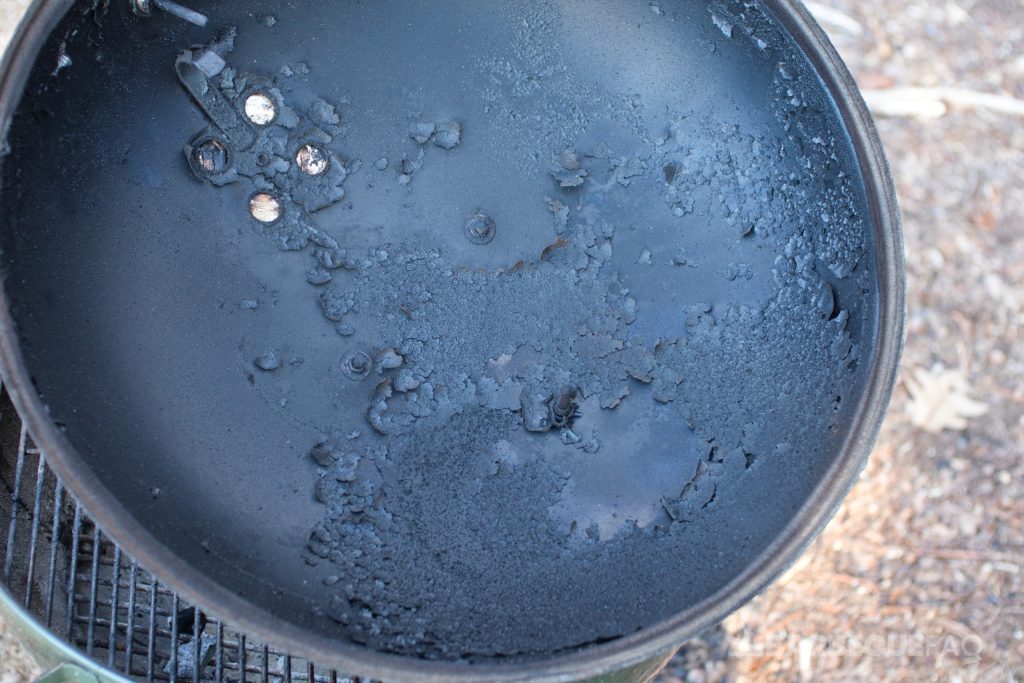
This isn’t a “seasoning” on the grill and it doesn’t aid in flavor.
Some people will also say it’s a “seal” which it also isn’t.
If your goal is to seal your lid, invest in a gasket to go around the perimeter of the lid – learn more about this concept in this article.
Use your grill brush or steel wool to remove loose pieces.
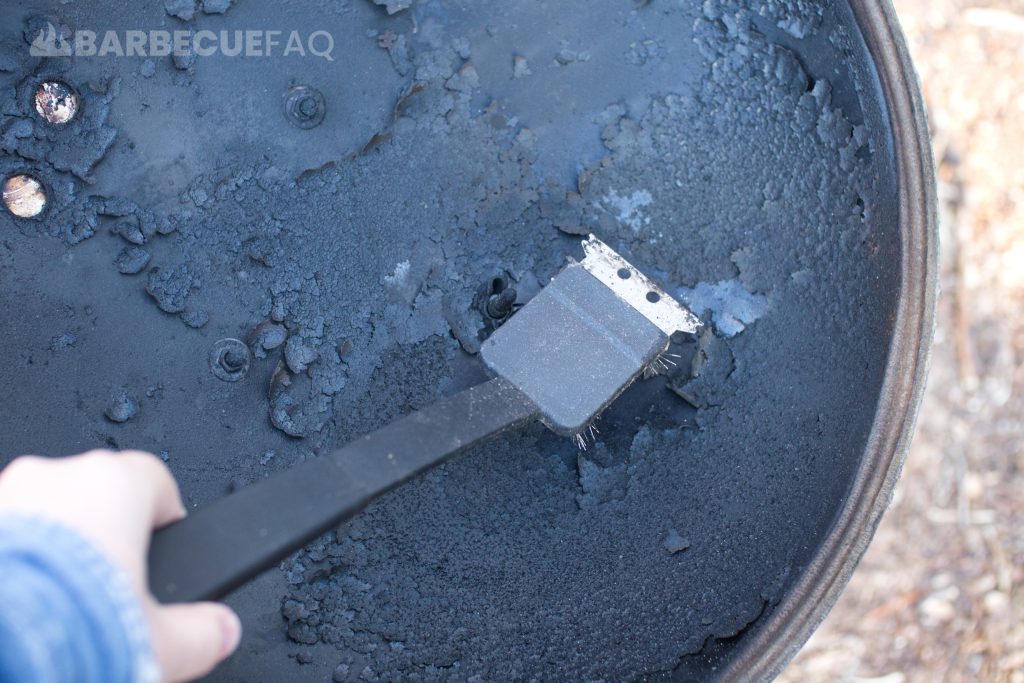
At this stage we’re not de-greasing anything, just removing loose debris.
Dump the loose debris in the trash.
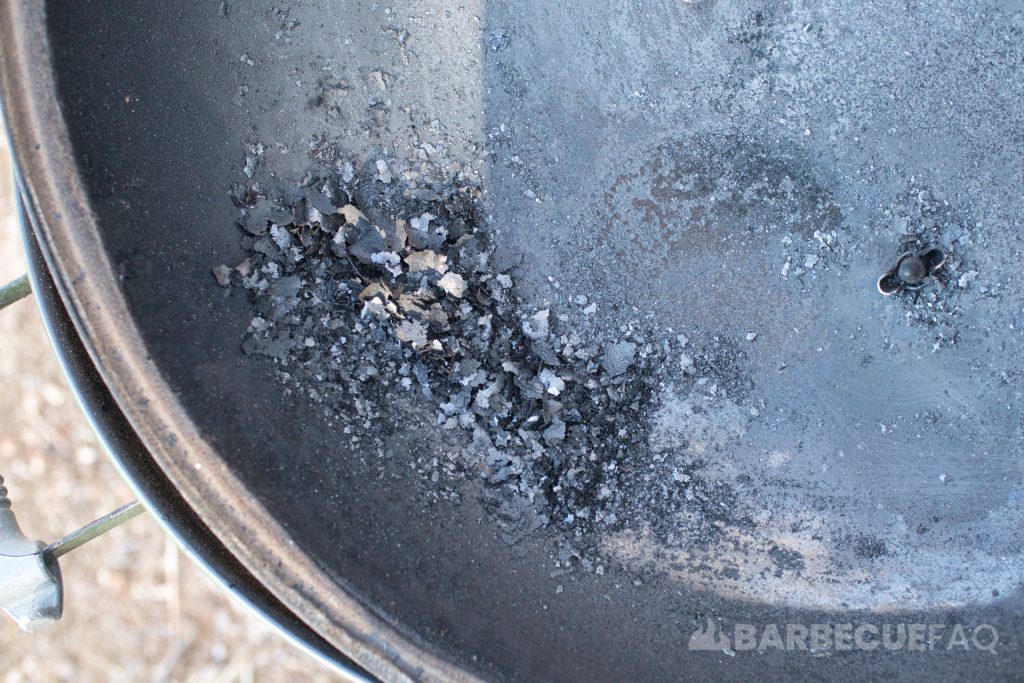
Once the loose pieces are removed, take your degreaser and liberally apply it to the entire surface of the lid.
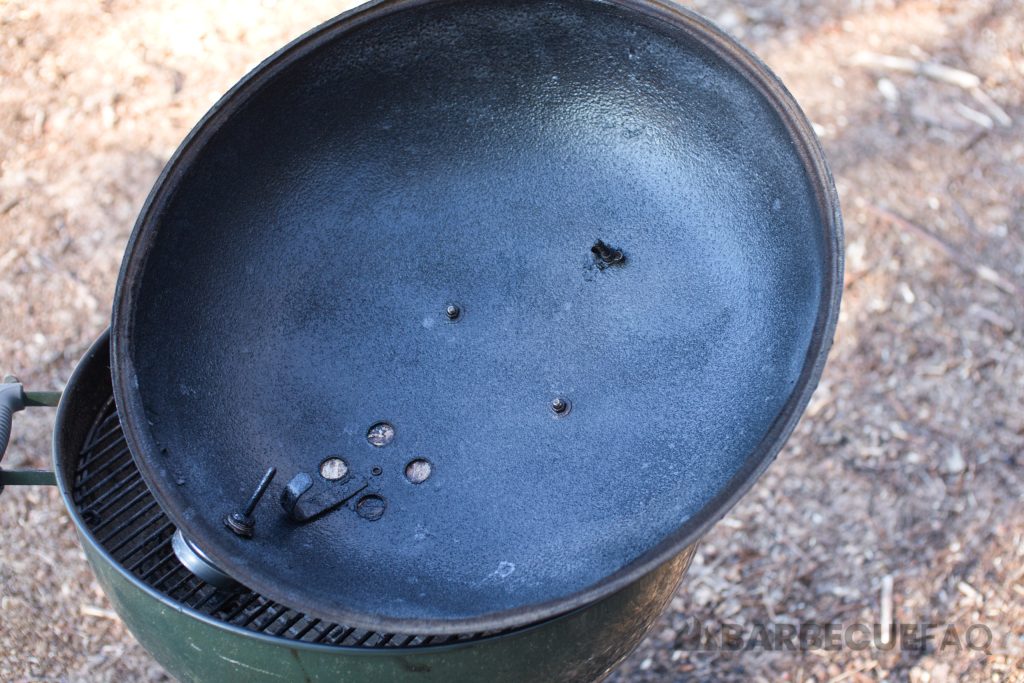
EasyOff notes that their product works as quickly as 3 minutes but allow it to sit for 20-30 minutes.
After 20-30 minutes, grab your putty knife and begin scraping the debris from the lid. A significant portion of the carbonized debris should scrape right off.
Scrape the entire lid and discard the sludge in the trash.
Use your hose/water to rinse the interior of the lid.
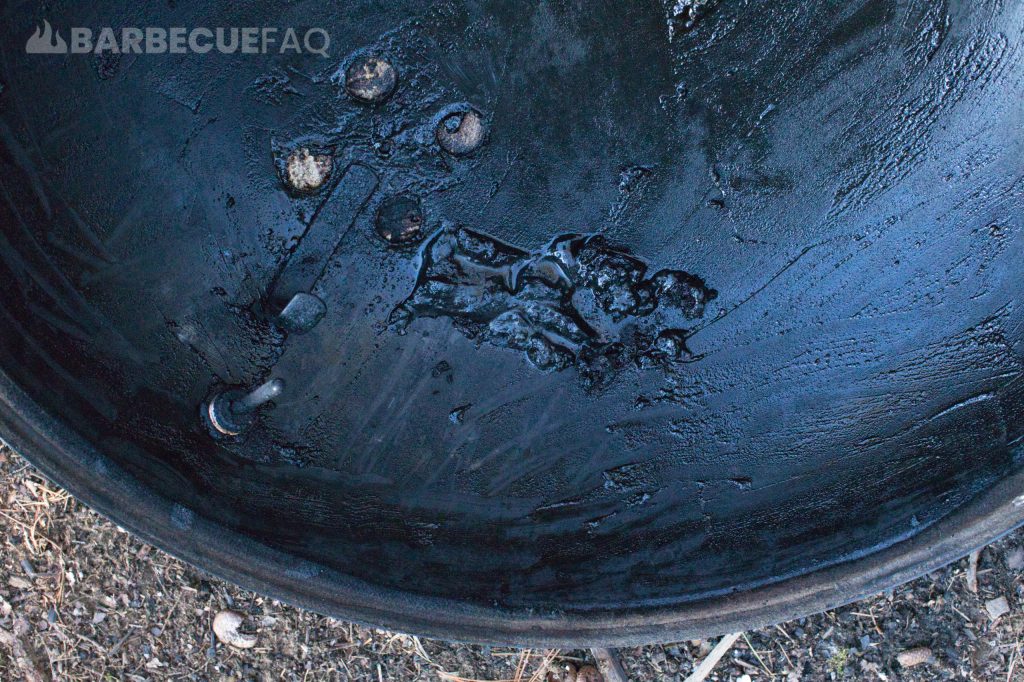
Once rinsed, repeat with dish soap and warm water.
Use a sponge with a scouring pad or some steel wool and remove any of the stuck on bits.

After doing so, the interior of the lid is likely back to new and the enamel should be shining.
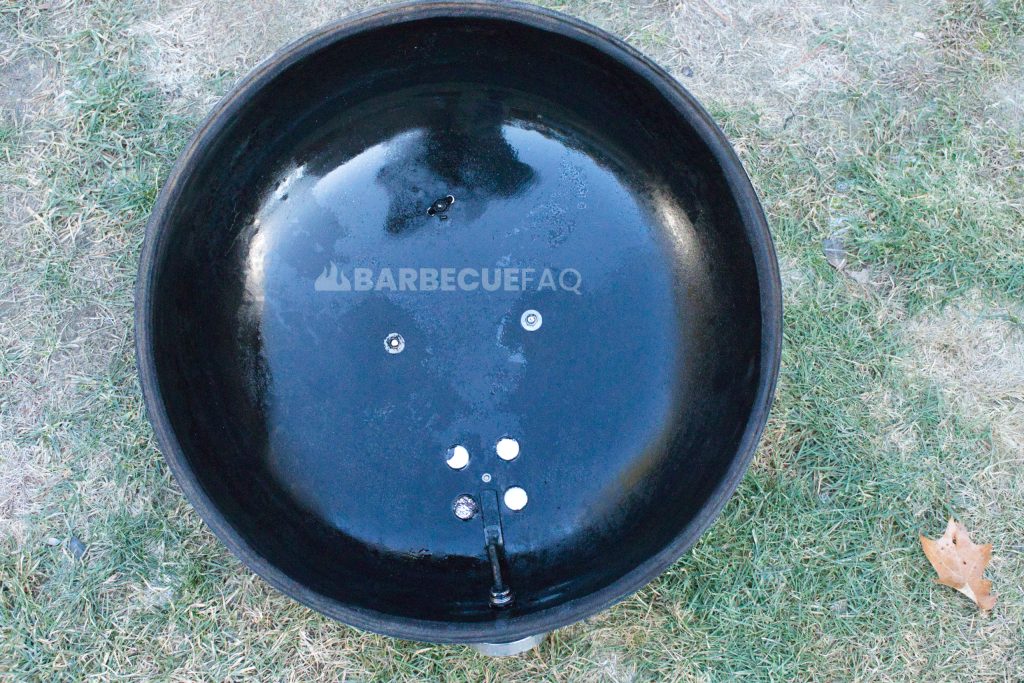
Note: If there are still carbonized bits on the lid, you can repeat this process.
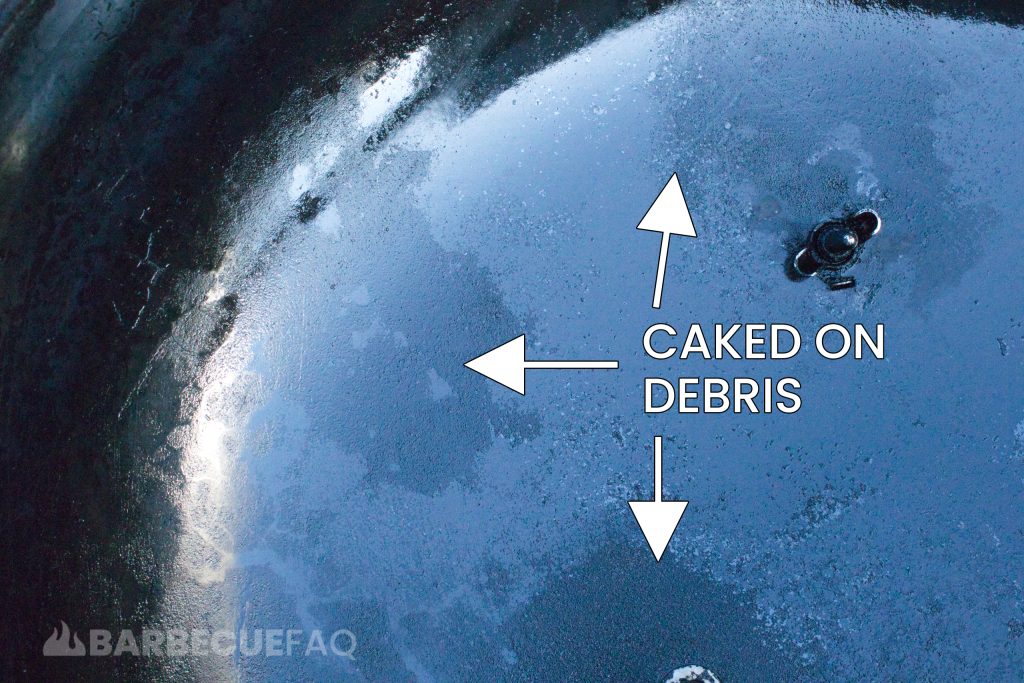
If there’s still a bit left, don’t fuss about it or keep repeating the above until it’s all gone.
Cleaning the Exterior of the Lid
Wipe the exterior to remove loose dirt and grime and then apply dish soap and scrub with warm soapy water.
Rinse the soap with your hose/water.

Cleaning the Bowl
Remove grill and ash grates and set aside.
Use your grill brush to scrape the interior of the bowl to remove loose pieces.
When the loose pieces are dislodged, remove them from the grill via the ash catch mechanism.

Spray the interior of the grill with your degreaser and let sit for 20-30 minutes.
Then use your plastic putty knife to scrape the residue from the surface of the bowl.
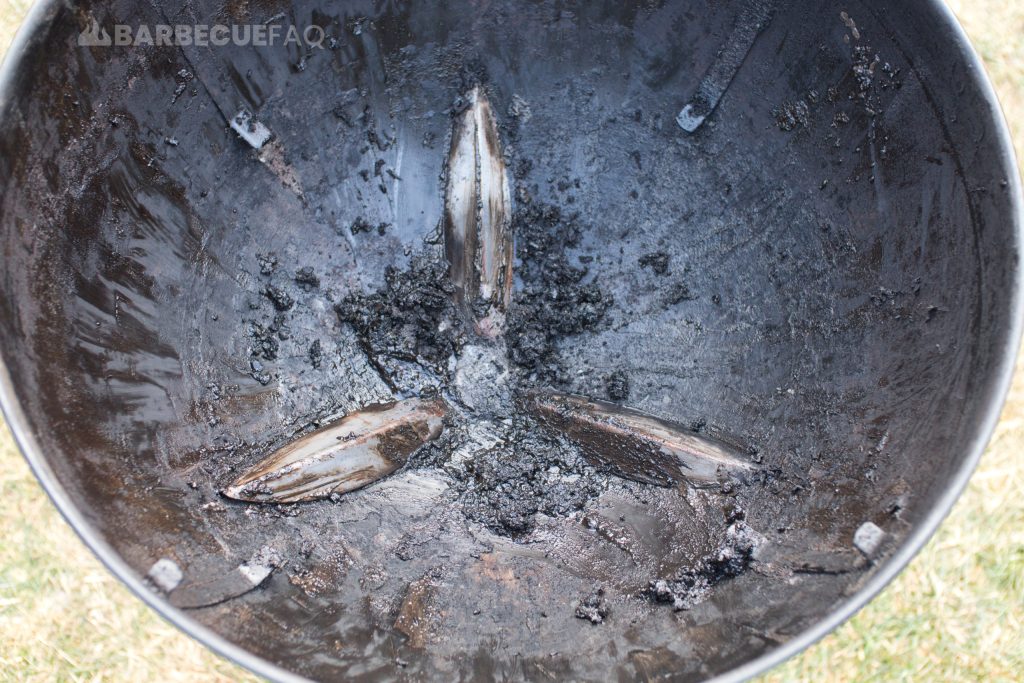
Discard this sludge in the trash with some paper towels.
Use a hose/water to rinse the interior of the bowl.
If there are any pieces of debris or carbonized material that are still stuck on bowl, use your sponge/scouring pad and some warm soapy water to further clean the bowl.
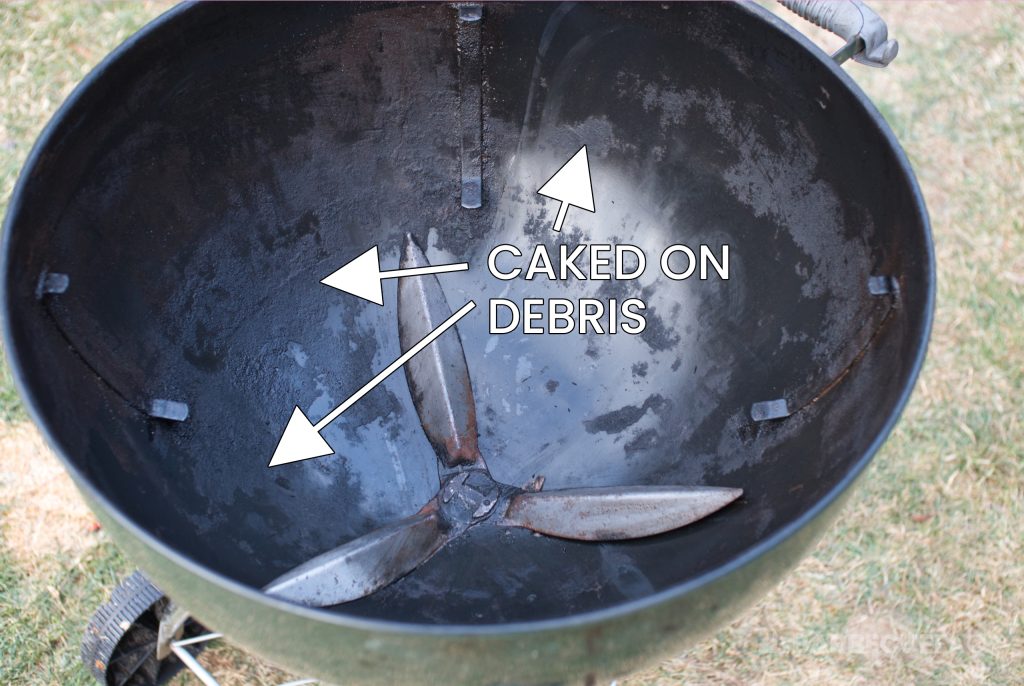
Pay particular attention to the blades of the cleaning mechanism; Usually debris will tend to collect here.
After this process, the lid/enamel should be back to the way it was when you bought it.
Note: If the above degreasing didn’t remove a lot of the carbonized material, I’d suggest re-applying the degreaser overnight then repeating the above process in the morning.
Here’s the bowl after removing the sludge and wiping clean with some warm, soapy water:
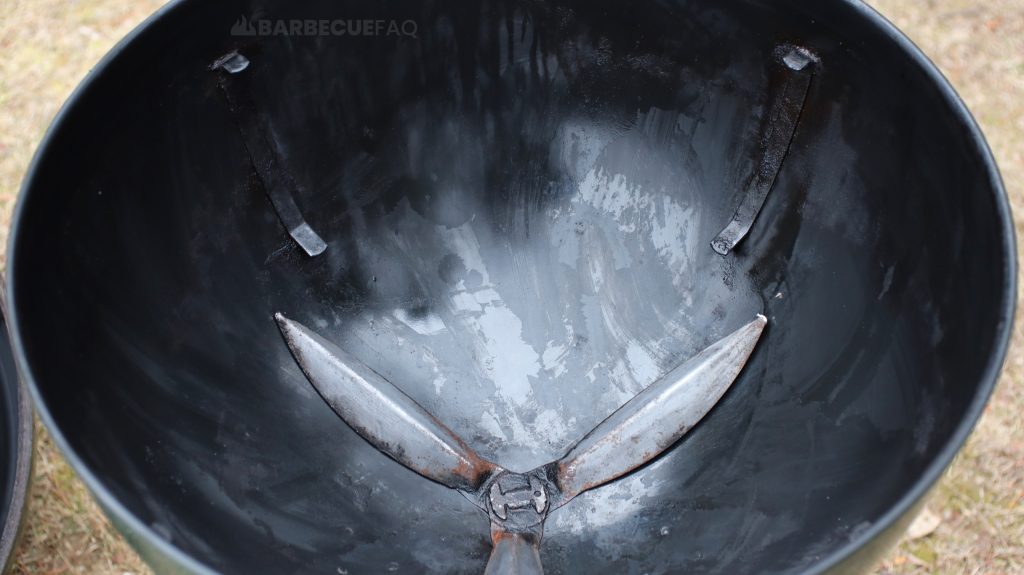
Cleaning the Exterior of the Bowl
Wipe first to remove debris and then apply soap and scrub with a sponge and warm soapy water.
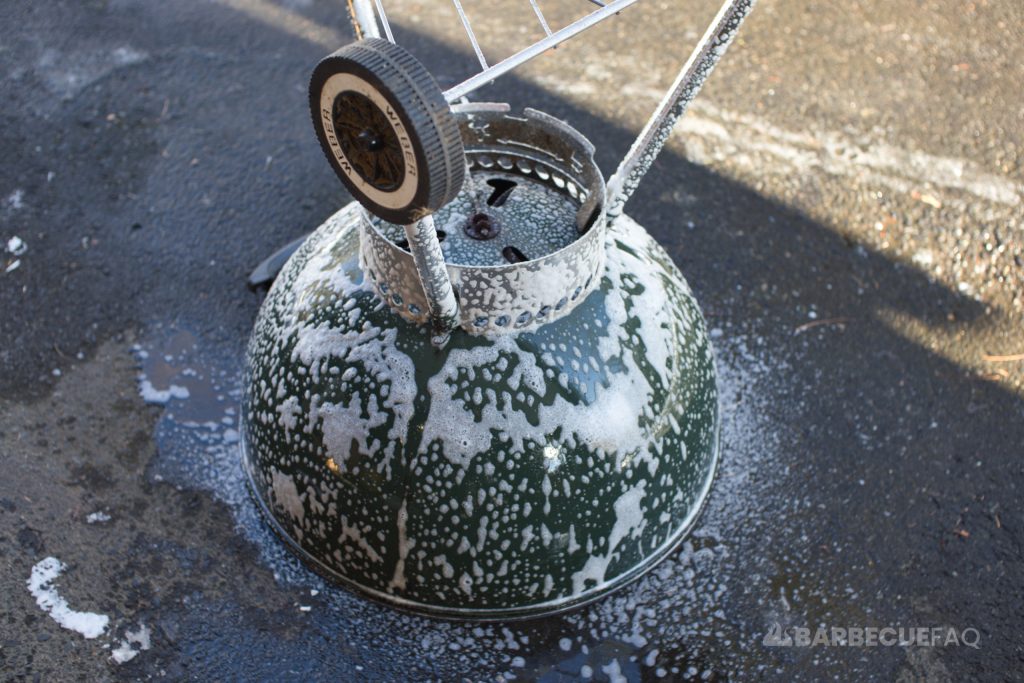
I do this for all parts of the exterior – the bowl, the legs, the ash catch, etc.
With the ash bucket, I simply filled it with some warm, soapy water and let it sit.
The ash bucket simply collects charcoal ash. You don’t need to get super detailed with shining the metal but you can use an aluminum polisher if you want.

Cleaning the Grill Grates
Remove debris with your grill brush.
Then in a small bowl, combine some Bar Keeper’s Friend and a splash of water until you get a loose, paste-like consistency.
Then, using your scouring pad/steel wool, work your sponge into the grill grates. You can be rather aggressive here, the BKF is an abrasive and will essentially shine the grill grates and further lift and remove debris.
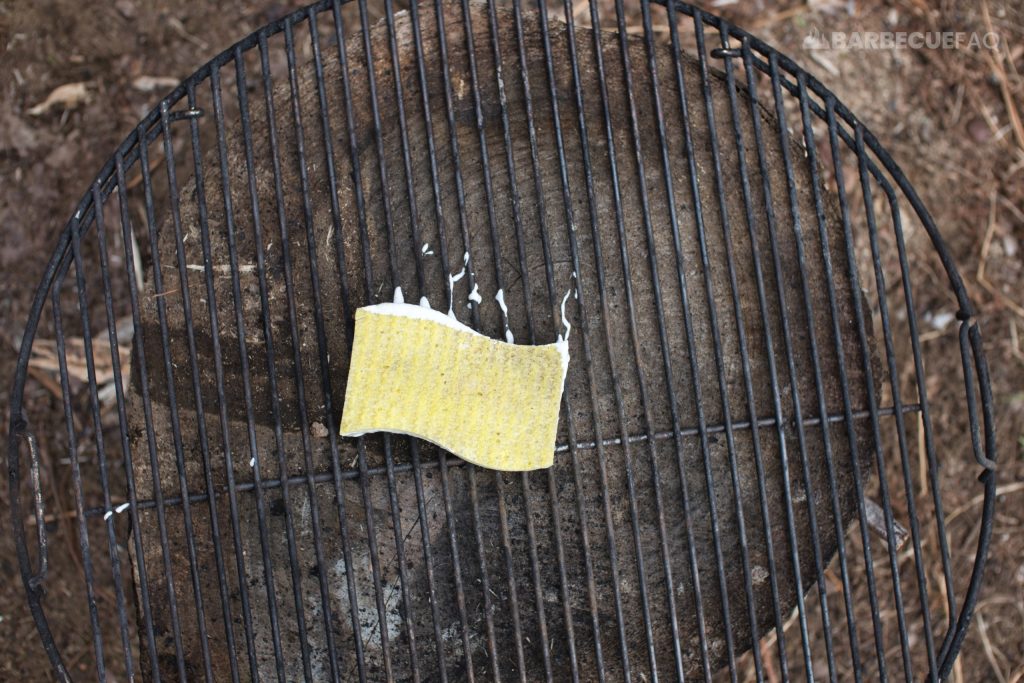
When cleaning grill grates, all I really care about is the surface of the grates – meaning I don’t really care about the underside.
After using the BKF, rinse with water.
To further remove debris on the grates, I like to use grill cleaning stones.
These stones are basically only good for one use and I’ll typically use one a year for a charcoal grill.
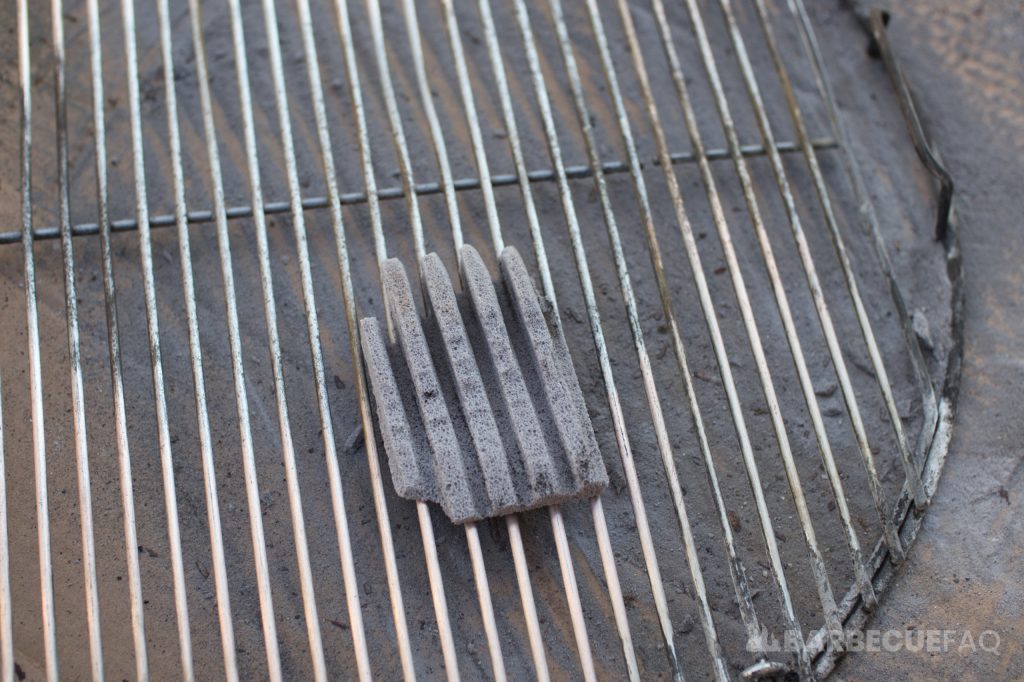
These stones do make quite the mess, which is why I put a cardboard box underneath the grate.
Since the charcoal grates don’t touch my food, all I do is clean them with my grill brush.
You can then put the grill grates back in your grill:
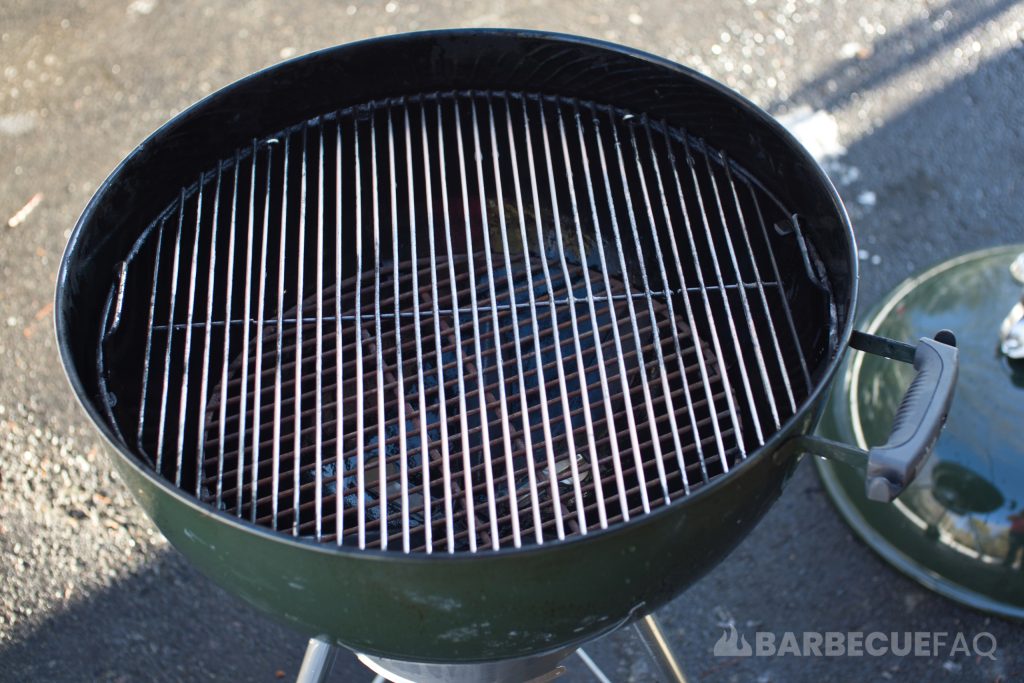
From there, I like to spray avocado oil on the interior of the grill – the grates, the bowl, the interior of the lid, etc.
The oil on the grates will also help to prevent rust from forming between now and your next cook.
Cleaning the Aluminum Parts?
This is optional.
Parts like the legs, charcoal ash bucket, the lid parts etc. can be polished with an aluminum cleaner – I just use one that I have for my vehicle and it works just the same.




